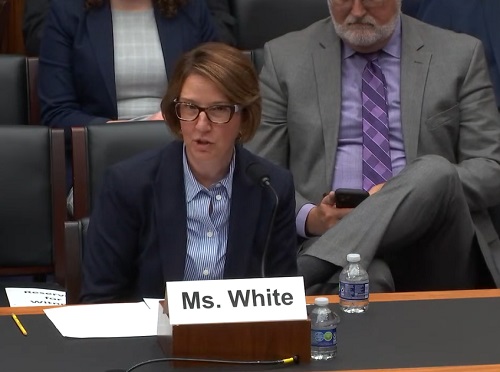A subcommittee within the House of Representatives Committee on Transportation and Infrastructure recently held a hearing surveying current and future Amtrak rail operations as well as the future prospects of intercity passenger rail service in the United States.
[Above photo by the House T&I committee]
Hosted by the Subcommittee on Railroads, Pipelines, and Hazardous Materials, the hearing – entitled “Amtrak and Intercity Passenger Rail Oversight: Promoting Performance, Safety, and Accountability” – featured three witnesses: Stephen Gardner, CEO of Amtrak; Anthony Coscia, chair of Amtrak’s board of directors; and Julie White, deputy secretary for multimodal transportation at the North Carolina Department of Transportation.
NCDOT’s White also chairs the Southeast Corridor Commission; a regional rail partnership that includes North Carolina, Virginia, South Carolina, Tennessee, Georgia, Florida, and Washington, D.C., that works in partnership with the Federal Railroad Administration, Amtrak, and various freight rail partners to plan regional rail initiatives, identify shared priorities, and secure consistent federal funding to improve rail services throughout the Southeast.

In her testimony, White explained that rail is the only mode that does not enjoy formulaic federal funding, meaning projects often languish on shelves awaiting the right competitive federal grant opportunity –resulting in decades-long waits for new service.
“Our local municipal partners recognize the importance of intercity and urban-rural connections and have demonstrated their enthusiasm and continued commitment to enhancing and/or bringing passenger rail service back to their communities,” she said. “State and local governments have prescribed budget cycles which do not align well with discretionary competitive grant programs. [That’s why] communities in North Carolina actively sought the submission of 12 existing rail corridors to the Federal Rail Administration’s Corridor Identification and Development [Corridor ID] pipeline program. This step unlocks planning funds so communities may begin the needed service development planning and identifying the needed infrastructure investments.”
White pointed out that another benefit of the Corridor ID program is this “pipeline for program delivery” provides clear sightlines to state and local government on the needed non-federal match to advance various passenger rail projects – allowing the local governments to budget accordingly.
“Predictable pathways allow local communities to better communicate plans to citizens and galvanize and maintain the support needed to lift such decades-long large scale [rail] projects,” she said.
Amtrak’s Gardner emphasized the importance of that state role in guiding investments in passenger rail; investments that aid the freight rail sector as well.

“Amtrak, the federal government, and our state partners have funded investments on nearly every Amtrak route to increase capacity to accommodate Amtrak trains – upgrading tracks and other infrastructure, including the installation of Positive Train Control and other safety systems,” he said in his testimony. “These publicly funded infrastructure investments have been particularly beneficial to the short lines and regional [freight] railroads on which Amtrak has added service, funding joint benefit investments they could not otherwise have afforded that have enabled them to handle heavier freight cars, increase freight train speeds and enhance safety.”
NCDOT’s White noted that her agency also shares its technical expertise with local communities to help them grow rail service – expertise that includes developing federal grant applications and the administration of federal funds, while the local community works to design their rail and transit future and provides the needed non-federal match for the competitive grant.
However she stressed that, “as we all know, planning and building infrastructure takes too long [with] rail having to pursue federal funds only through federal discretionary grant opportunities.” That’s why White believes that, via regular reliable rail formula funding, state partners could significantly shorten the time it takes to put rail investments in the ground.
“NCDOT has a strong history of obligating and spending billions of federal dollars through formula programs as do many other states,” she said. “Streamlining the discretionary process to enable similar approvals would be beneficial to all stakeholders.”



